
Kathleen Mansfield Murry was a New Zealand writer, essayist and journalist, widely considered one of the most influential and important authors of the modernist movement. Her works are celebrated across the world, and have been published in 25 languages.
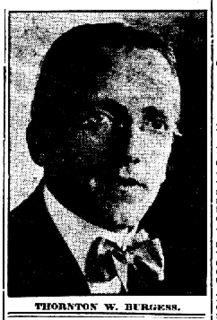
Thornton Waldo Burgess was an American conservationist and author of children's stories. Burgess loved the beauty of nature and its living creatures so much that he wrote about them for 50 years in books and his newspaper column, Bedtime Stories. He was sometimes known as the Bedtime Story-Man. By the time he retired, he had written more than 170 books and 15,000 stories for the daily newspaper column.
The Amalgamated Press (AP) was a British newspaper and magazine publishing company founded by journalist and entrepreneur Alfred Harmsworth (1865–1922) in 1901, gathering his many publishing ventures together under one banner. At one point the largest publishing company in the world, AP employed writers such as Arthur Mee, John Alexander Hammerton, Edwy Searles Brooks, and Charles Hamilton; and its subsidiary, the Educational Book Company, published The Harmsworth Self-Educator, The Children's Encyclopædia, and Harmsworth's Universal Encyclopaedia. The company's newspapers included the Daily Mail, the Daily Mirror, The Evening News, The Observer, and The Times. At its height, AP published over 70 magazines and operated three large printing works and paper mills in South London.
A story paper is a periodical publication similar to a literary magazine, but featuring illustrations and text stories, and aimed towards children and teenagers. Also known in Britain as "boys' weeklies", story papers were phenomenally popular before the outbreak of the Second World War.

Angela Brazil was one of the first British writers of "modern schoolgirls' stories", written from the characters' point of view and intended primarily as entertainment rather than moral instruction. In the first half of the 20th century she published nearly 50 books of girls' fiction, the vast majority being boarding school stories. She also published numerous short stories in magazines.
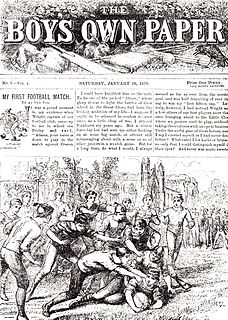
The Boy's Own Paper was a British story paper aimed at young and teenage boys, published from 1879 to 1967.
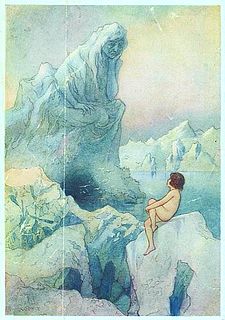
Warwick Goble was a British illustrator of children's books. He specialized in Japanese and Indian themes.
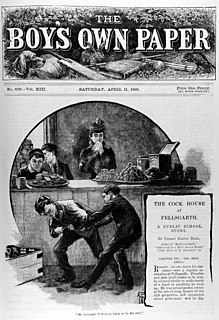
Magazines intended for boys fall into one of three classifications. These are comics which tell the story by means of strip cartoons; story papers which have several short stories; and pulp magazines which have a single, but complete, novella in them. The latter were not for the younger child and were often detective or western in content and were generally greater in cost. Several titles were published monthly whereas the other two categories were more frequent.
Harry Rountree was a prolific illustrator working in England around the turn of the 20th century. Born in Auckland, New Zealand, he moved to London in 1901, when he was 23 years old.

Chums was a boys' weekly newspaper started in 1892 by Cassell & Company and later, from 1927, published by Amalgamated Press. The publisher gathered the weekly paper into monthly and annual editions. The monthly versions were published on the 25th of the month, and up to November 1920 included all the content of the weekly editions. From then on, the monthly editions had all the story content of the weeklies, but left out the covers. This left a gap which was then filled by short stories, articles and even serials that were not included in the weekly edition.The serial ceased publication in 1941.
The Schoolgirl was a British weekly story paper aimed at girls. Published by Amalgamated Press (AP), The Schoolgirl ran in two series, the first from 1922 to 1923, and the second from 1929 to 1940.
The Schoolgirls' Own was a British weekly story paper aimed at girls. Published by Amalgamated Press, it was launched in February 1921 and ran for 798 issues until May 1936, when it was merged with a sister publication.
Charles Henry St. John Cooper was a prolific English novelist of school and adventure fiction. He wrote thousands of stories for several Amalgamated Press papers, sometimes under the pen name Mabel St. John. He is perhaps best known for creating, in 1908, the character Pollie Green, considered the "most popular, though not the first, in a series of irrepressible schoolgirl heroines". According to his son, he also wrote many "authorless" Sexton Blake stories for the Union Jack. His novel Sunny Ducrow was adapted into a 1926 film, Sunny Side Up.
Christine Chaundler was a prolific English children's author, who also wrote stories for boys as Peter Martin. Some of her hundreds of short stories were broadcast by the BBC.
John Savile Lumley was a prolific English book illustrator, and poster designer best known for his 1915 war recruitment poster Daddy, what did you do in the Great War?
British girls' comics flourished in the United Kingdom from the 1950s through the 1970s, before beginning to decline in popularity in the 1980s and 1990s. Publishers known for their girls' comics included DC Thomson and Fleetway/IPC. Most titles appeared weekly, with the content primarily in picture-story format. The majority of the stories were serialized, with two or three pages per issue, over eight to twelve issues. They were marketed toward young teen girls.
School Friend was the name of two different weekly publications marketed toward girls, both of which were pioneering in their respective categories. The first School Friend, published from 1919 to 1929, was the first story paper marketed exclusively to girls. The second School Friend, published from 1950 to 1965, is considered the first British girls' comic. Although both published by Amalgamated Press, and both marketed toward girls, the content of the two publications was not directly related.

Girls' Crystal was a British weekly story paper and then a comic book published by Amalgamated Press (AP) that ran from 1935 to 1963. Along with School Friend and Girl, it was one of the first British girls' comics.
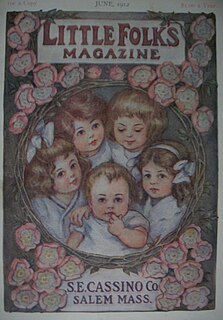
Little Folks was a monthly United States children’s magazine for young readers from three to twelve years-old. It was founded by publisher Samuel E. Cassino, and was published between November 1897 and 1926 – originally in Boston, but was later relocated to Salem, Massachusetts.








